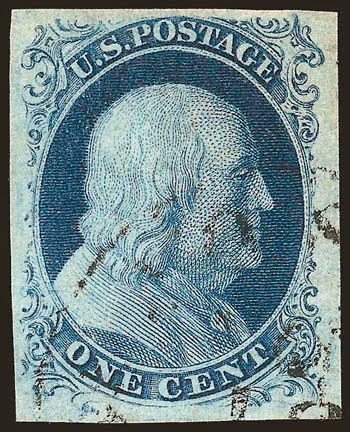5
5A
6
7
8
8A
9
The question of which stamps should have major catalog number status and which should be delegated to small “a” and “b”s as varieties occupied a great deal of catalog makers time in the early decades of the last century. The solutions that were adopted were really compromises that reflected the needs of the commercial community. All of the many types of the one cent 1851 were originally listed as one Scott number. Today they are listed as six major numbers (from #5-#9, including #8A), but originally they were all types of #42 (Scott had originally numbered the Postmaster Provisionals with #1 and it wasn’t until abut 1940 that the catalog listing was changed to today’s format). The types of the one cent 1851 were produced by transfer varieties created during the transfer of the die to the printing plate. Some of the positions are very rare. #5 exists on only one position on one plate of the 1851 printing so it comes out at the rate of about of one stamp for every thousand printed. That’s rare and #5’s sell in the $40,000 range compared with the most common variety #9 which sells for $40. I’ve always felt that stamps printed from the same sheet should all bear the same major catalog number and if there are varieties they should have small alphabet suffixes to the number. That way less specialized collectors don’t need to have spaces in their album for stamps that they will never get and that interest only students of the hobby. Of course if this were the case such varieties would sell for far less money, which may have been the real reason that it happened the way it did.








